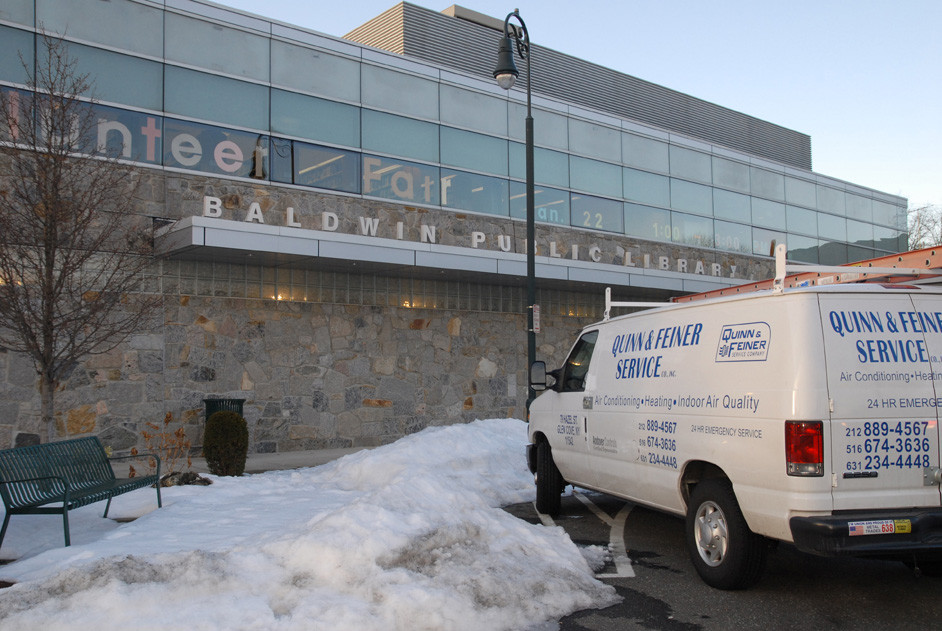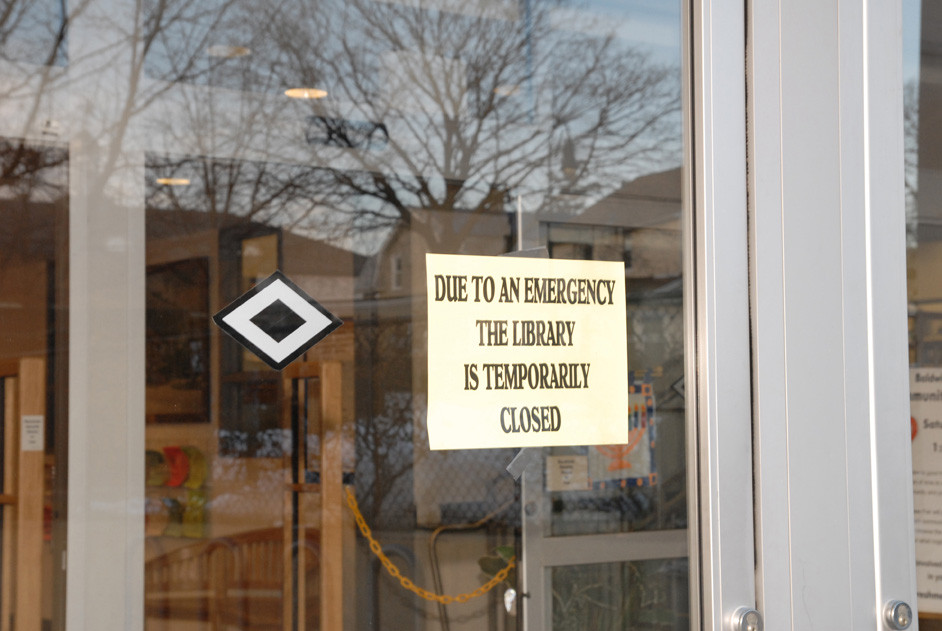BPL closing thought to be result of false alarm
Library open and operating normally
It’s safe to go back to the library. That’s the message coming from all quarters this afternoon following an emergency closure of the BPL yesterday.
Just before 11 a.m. on the morning of Jan. 4, 3 members of the library’s Children’s Department staff simultaneously reported headaches and blurry vision.
“Because we had multiple people reporting the same symptoms at the same time, we called the Fire Department right away,” said Catherine Overton, the library’s assistant director. According to Baldwin Fire Department First Deputy Chief Kevin Smith, firefighters and police helped evacuate the small number of patrons within the library and the building was closed for air quality testing.
“Both the fire department and the police arrived quickly and helped us empty the building,” Overton reported. “They screened the staff members who’d originally reported having headaches and didn’t find anything wrong with them. A few people who’d been in the building tested for elevated levels of carbon monoxide, but it wasn’t thought to be due to anything in the library. One of them was a smoker, for example. A hazmat team from Nassau County also came and tested the air and said there wasn’t anything wrong.”
Officials on the scene told library administrators it would be safe to reopen the library to the public, but Overton and her colleagues elected to keep the building closed to allow for further testing. The Library’s heating and ventilation company inspected the building’s mechanical system and found it in proper operating condition. In addition, Overton said, “an independent environmental air quality testing company performed air quality tests and reported the absence of carbon monoxide at the Library.”
Seven of the people present during the initial scare visited South Nassau Community Hospital for carbon monoxide exposure testing, but all have now been cleared and released. The library opened for business as usual this morning.
“The closing was, for the most part, precautionary,” Overton told the Herald. “One media report said there were odors and fumes in the building and that wasn’t true. In fact, the people who originally complained of headaches didn’t even go to the hospital.”
Although no conclusions have yet been reached as to what initially sparked the scare, one theory is that automotive exhaust may have been sucked in by the building’s ventilation system causing a temporarily unhealthy atmosphere.
The Library installed a number of carbon monoxide detectors overnight.









